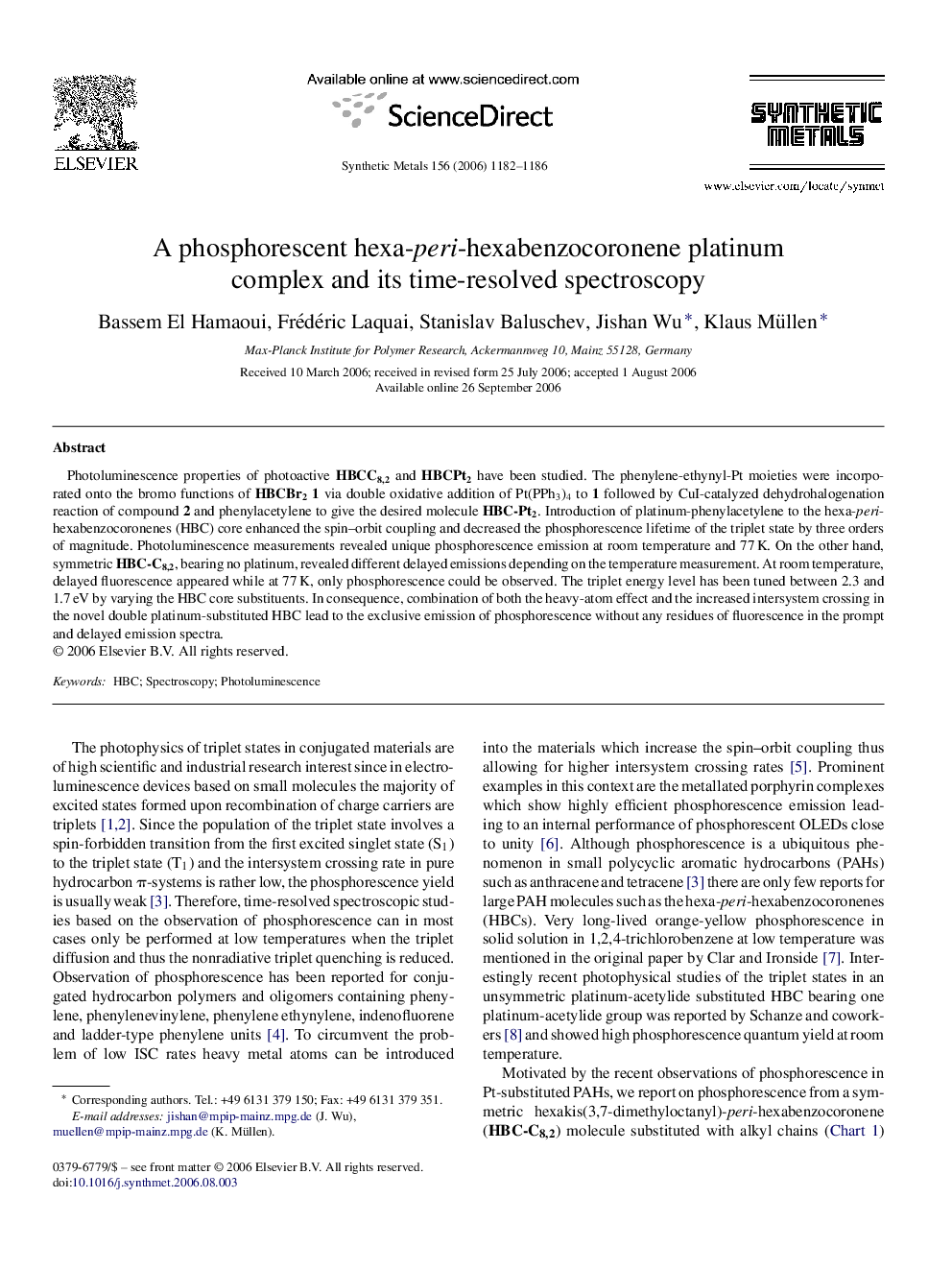| Article ID | Journal | Published Year | Pages | File Type |
|---|---|---|---|---|
| 1443731 | Synthetic Metals | 2006 | 5 Pages |
Photoluminescence properties of photoactive HBCC8,2 and HBCPt2 have been studied. The phenylene-ethynyl-Pt moieties were incorporated onto the bromo functions of HBCBr21 via double oxidative addition of Pt(PPh3)4 to 1 followed by CuI-catalyzed dehydrohalogenation reaction of compound 2 and phenylacetylene to give the desired molecule HBC-Pt2. Introduction of platinum-phenylacetylene to the hexa-peri-hexabenzocoronenes (HBC) core enhanced the spin–orbit coupling and decreased the phosphorescence lifetime of the triplet state by three orders of magnitude. Photoluminescence measurements revealed unique phosphorescence emission at room temperature and 77 K. On the other hand, symmetric HBC-C8,2, bearing no platinum, revealed different delayed emissions depending on the temperature measurement. At room temperature, delayed fluorescence appeared while at 77 K, only phosphorescence could be observed. The triplet energy level has been tuned between 2.3 and 1.7 eV by varying the HBC core substituents. In consequence, combination of both the heavy-atom effect and the increased intersystem crossing in the novel double platinum-substituted HBC lead to the exclusive emission of phosphorescence without any residues of fluorescence in the prompt and delayed emission spectra.
